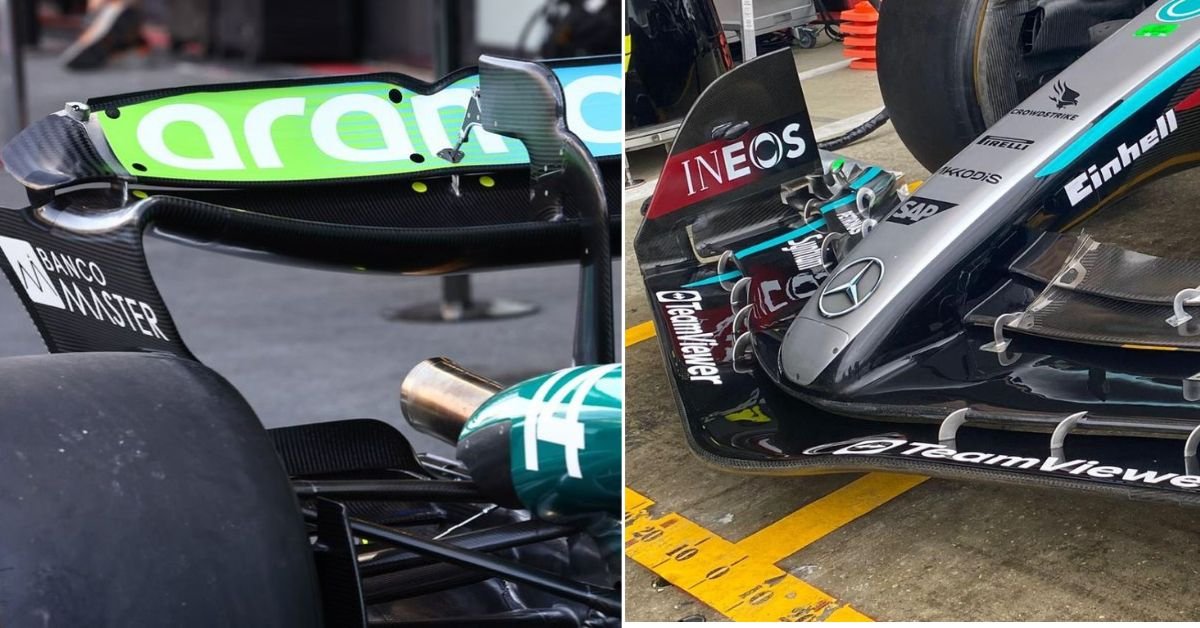F1 cars are expected to go around corners as quickly as possible, hitting speeds of 190 miles per hour. These speeds are only made possible by the air which flows around the car, creating downforce.
Aerodynamic components on F1 cars, mainly the front and rear wings help the cars generate downforce. As the car accelerates, more air moves through the competents making higher levels of downforce. Everything on the car is designed to create the most downforce possible, but why is it so important in F1?
What does Downforce do to an F1 car?
Downforce is key for an F1 car to be at its best. It is a vertical force that pushes the car downwards towards the track creating more grip and stability for the driver to push. The greater the downforce, the driver has more confidence to brake that bit later or push down on the accelerator quicker.
Downforce might need to be adjusted for different tracks. For example, in a circuit with long straights like Monza, teams will run a ‘skinny’ rear wing which reduces downforce to minimise drag. However, at tracks like Monaco, more downforce is needed to go around the corner as quickly as possible so a larger rear wing would be used.
The wind direction is also important. A headwind pushed the car down creating more downforce. However, a tailwind pushes the car forward towards the corner faster but reduces the downforce.
F1 teams use wind tunnels and CFD simulations to help aid the performance of the cars. The data collected by the engineers improve the design of all components of the car to help increase downforce.
How much Downforce does an F1 car produce?
An F1 car driving at 100 mph produces 750 KG of downforce. However, at top speed, the cars can generate five times their weight. This is important as the weight is pushing the car down towards the track, creating the best grip for the drivers. In the cockpit, they can feel forces up to six times their body weight.
How Downforce improves the performance of a Formula 1 car?
Good downforce levels are vital for F1 cars. The better the downforce, the better race the teams and drivers will have. It is key for grip, allowing drivers to attack the corners at the fastest speeds possible. With these higher downforce cars in recent years, Copse Corner at Silverstone can be taken flat out but before the new regulations, a lift was needed.
Get the down low on downforce, aerodynamics and drag from Mercedes F1 Technology Director Mike Elliott
And find out whether an @F1 car could REALLY drive upside down 😱 👉 https://t.co/lapmQHajWm pic.twitter.com/1N9v7tMRXh
— Mercedes-AMG PETRONAS F1 Team (@MercedesAMGF1) April 25, 2020
The better grip creates more stability to push the car to its limits. Downforce also reduces tyre wear by reducing sliding. Sliding causes tyres to overheat and so wear down quicker. The downforce pushes the tyres into the ground meaning the tyres absorb less heat.












